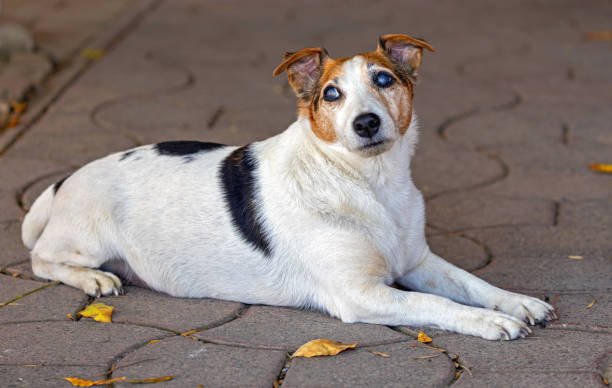How to Stop Dog Food Aggression
As a dog owner, it can be concerning when your furry friend starts showing signs of aggression around their food. Dog food aggression is a common behavior issue among pets, and it can stem from various underlying reasons. However, it’s crucial to address this problem as soon as possible, as it can lead to severe consequences, such as biting or attacking humans or other pets. In this article, we’ll discuss what causes dog food aggression and how to stop it effectively.
Understanding Dog Food Aggression
Dog food aggression occurs when a dog becomes possessive of their food and displays aggressive behavior towards anyone who approaches its food bowl. This behavior is rooted in the dog’s natural instinct to protect its resources, including food. Several factors can trigger dog food aggression, including:
- Fear: Dogs may become aggressive if they feel threatened or scared while eating. This could be due to past traumatic experiences or being in a stressful environment.
- Dominance: Some dogs may view their food as a valuable resource that they need to defend to maintain their dominant status in the pack.
- Resource guarding: This is a behavior where a dog feels the need to protect their food, toys, or other possessions from others.
- Health issues: Pain or discomfort while eating can cause a dog to become aggressive to prevent anyone from approaching their food bowl.
Signs of Dog Food Aggression
Identifying the signs of dog food aggression is essential to address the problem effectively. Here are some common signs that your dog may display when they are experiencing food aggression:
- Growling or snarling when approached while eating
- Showing teeth or biting when someone comes near their food bowl
- Stiffening or tensing up when approached
- Eating food quickly or aggressively
How to Stop Dog Food Aggression
If your dog is displaying signs of food aggression, there are several things you can do to help stop this behavior. Here are some effective tips:
1. Consult a Veterinarian
The first step in addressing dog food aggression is ruling out any underlying medical issues. Schedule a visit to your veterinarian to ensure your dog is healthy and not experiencing pain or discomfort while eating.
2. Start with Training and Socialization
Training and socialization are essential in preventing and correcting dog food aggression. Start by teaching your dog basic obedience commands, such as “sit,” “stay,” and “leave it.” These commands will help your dog understand your expectations and control their behavior around their food bowl.
Additionally, expose your dog to different people and other pets, especially during feeding times, to help them learn how to share resources and reduce their need to protect their food.
3. Change Your Dog’s Feeding Routine
Changing your dog’s feeding routine can also help reduce their food aggression. Start by feeding your dog smaller, more frequent meals throughout the day instead of one large meal. This will help your dog feel less hungry and reduce their anxiety around food.
You can also feed your dog in a separate room or a designated feeding area to reduce the need to protect their food. Additionally, avoid approaching your dog while they are eating, as this can trigger their protective instincts.
4. Use Positive Reinforcement
Positive reinforcement is a powerful tool in correcting dog food aggression. Whenever your dog displays non-aggressive behavior around their food, such as eating calmly or allowing you to approach their bowl, reward them with treats and praise. This will help reinforce positive behavior and encourage them to continue displaying non-aggressive behavior.
5. Seek Professional Help
If your dog’s food aggression persists or becomes severe, consider seeking professional help from a dog behaviorist or a certified dog trainer. They can provide you with specialized training and behavior modification techniques to help correct this behavior effectively.
In conclusion, dog food aggression can be a challenging problem to deal with, but it’s essential to address it as soon as possible to prevent it from escalating. By understanding the underlying causes of this behavior and implementing the tips discussed above, you can help your dog overcome their food aggression and become a well-behaved, happy pet.
Remember to be patient and consistent in your approach, and always use positive reinforcement to encourage good behavior. With time and effort, you can help your furry friend overcome their food aggression and enjoy a peaceful mealtime.
FAQs
Why is my dog suddenly aggressive around their food bowl?
Sudden onset of food aggression in dogs can be caused by various factors, such as illness, pain, or changes in the environment. It’s essential to consult a veterinarian to rule out any medical issues and address the problem effectively.
How do I know if my dog is in pain while eating?
Signs that your dog may be experiencing pain while eating include reluctance to eat, drooling, chewing on one side of the mouth, and avoiding hard or crunchy foods. If you suspect your dog is in pain, consult a veterinarian for a diagnosis and treatment plan.
Can I train an adult dog to overcome food aggression?
Yes, with patience, consistency, and positive reinforcement, you can train an adult dog to overcome food aggression. Seek professional help if necessary to ensure the best possible outcome.
How long does it take to correct food aggression in dogs?
The time it takes to correct food aggression in dogs depends on several factors, such as the severity of the behavior and the dog’s willingness to learn. Be patient and consistent in your approach, and always use positive reinforcement to encourage good behavior.
Can medication help treat food aggression in dogs?
In some cases, medication may be used in conjunction with behavioral modification techniques to treat food aggression in dogs. Consult a veterinarian or a certified dog behaviorist for advice on the best treatment plan for your dog.







